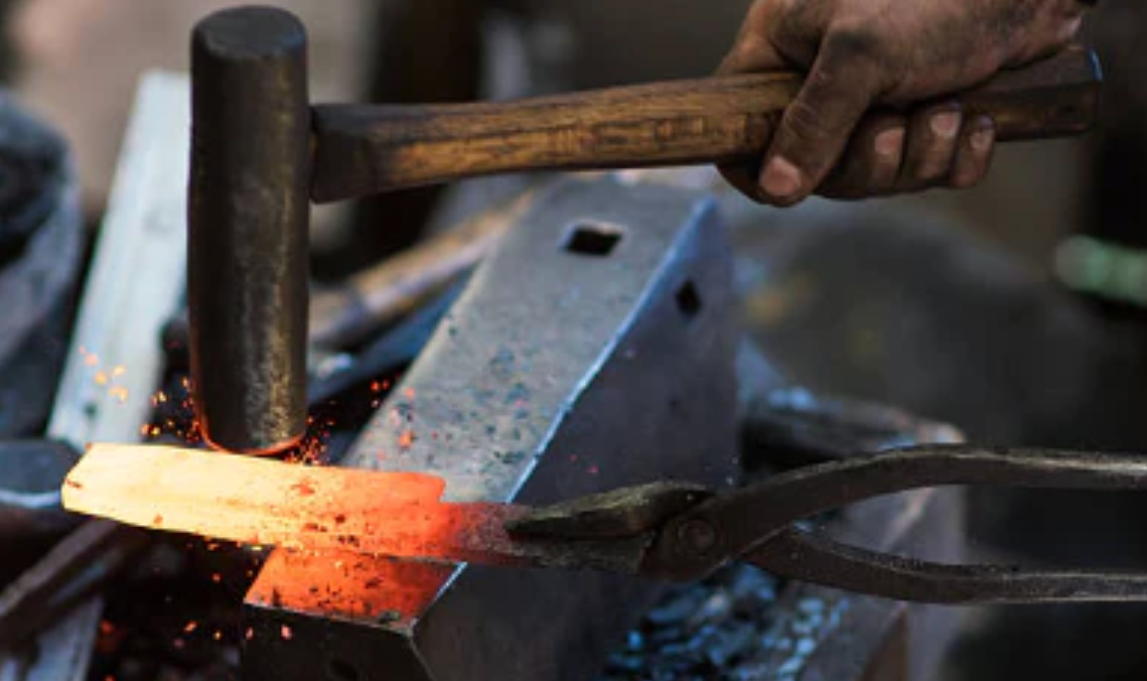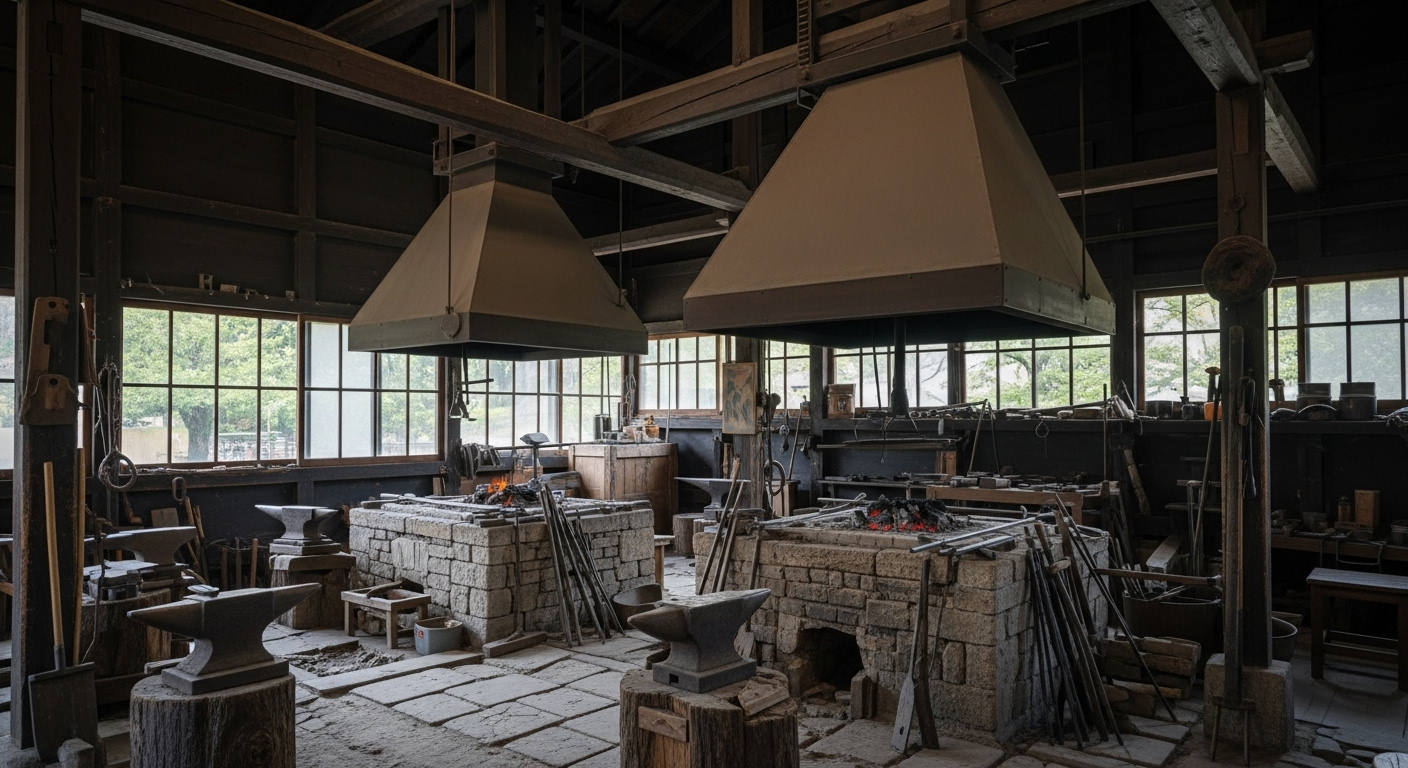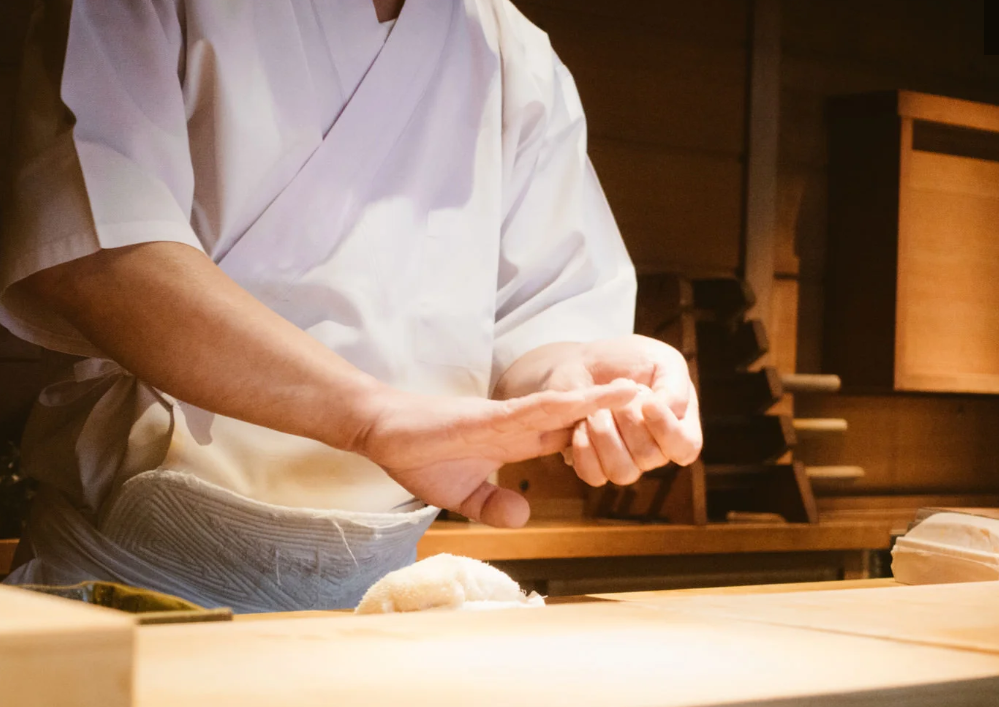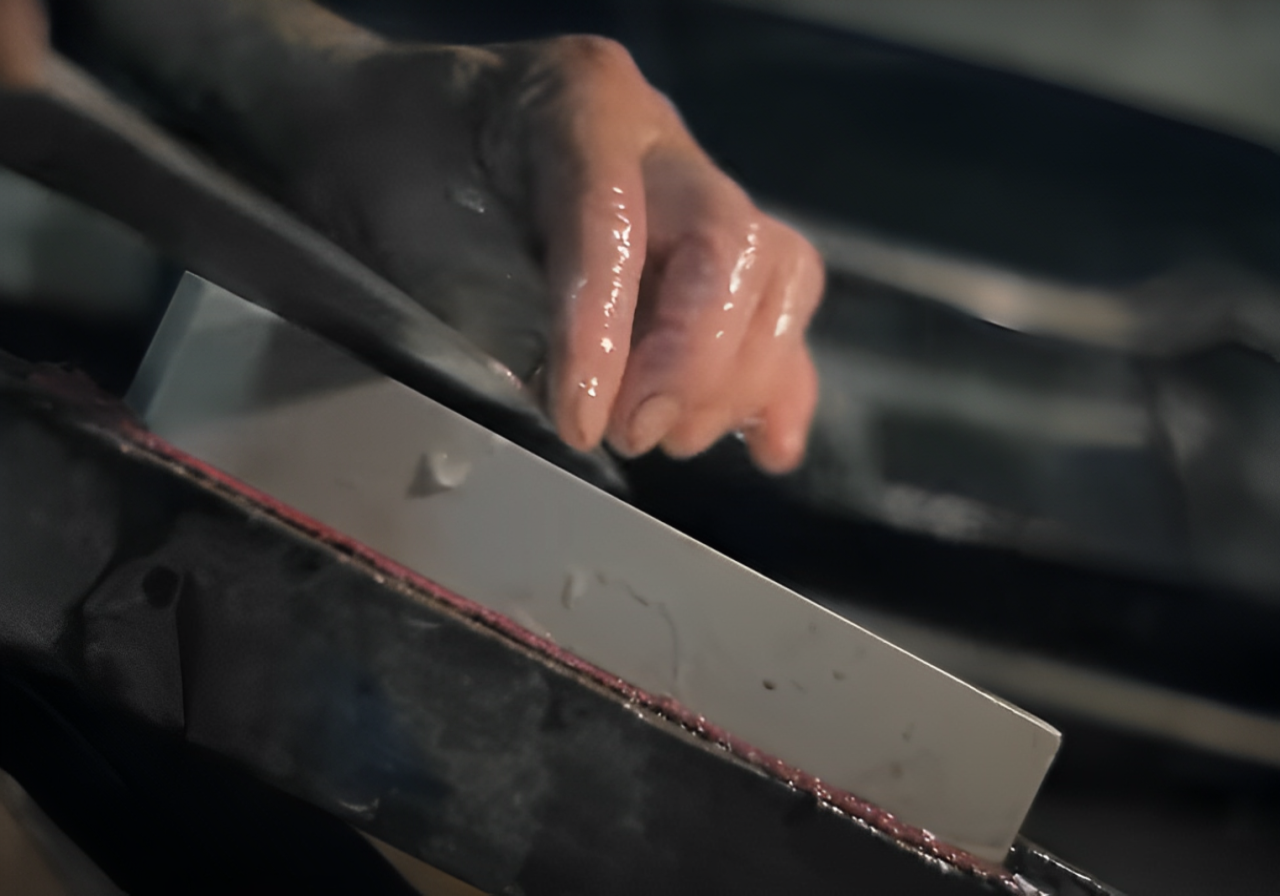
Before Using a Japanese Knife
-
Japanese Knife Basics — What Every Owner Should Know
A Japanese knife is more than a tool — it’s a work of art, prized for its sharpness and refined beauty. But that sharpness is also delicate, and the way you use it from the very first cut determines how long it will last.
In this guide, we’ll show you what not to cut, how to handle the blade with care, and why Japanese knives require a different touch. Master these essentials, and your knife will reward you with a lifetime of precision and elegance. -
-
A Japanese Knife Begins Its Journey Before the First Cut
At first glance, a Japanese knife may seem like just another kitchen tool. But once you hold it, you realize: this is a blade unlike any other. Its balance, its sharpness, and even its silence carry a question—"Will you treat me right?"
-
And no matter how beautifully crafted it is, a Japanese knife can lose its brilliance in an instant if used the wrong way. One careless move—cutting the wrong thing or storing it wet—can shorten its life drastically.
-
In this article, we’ll explore the essential "do nots" before you use a Japanese knife. But more importantly, we’ll explain why those rules exist. Because understanding the reason behind Japanese knife care is what allows your knife to serve you faithfully for decades.
-
1. Why Knowing What Not to Cut Comes First
One of the most common early mistakes is cutting something you shouldn’t.
I once saw a chef drive a brand-new Japanese knife straight into a frozen piece of meat. A loud crack followed. The edge chipped instantly. -
Japanese knives are designed for precision, not brute force.
Hard ingredients like frozen food, bones, or crustacean shells are too much for their fine edge.- For bones or shells, use a specialized blade like a deba.
- But for frozen food, remember this rule: no Japanese knife should be used straight from the freezer. Always let food thaw at least partially before cutting. Otherwise, even the strongest blade can be damaged in seconds.
-

2. Why Twisting or Hammering a Japanese Knife Is Dangerous
Have you ever used a knife to pry something open—like a frozen package or even a can lid? With Western knives, you might get away with it. But with a Japanese knife, that’s a recipe for disaster.
-
Japanese knives are incredibly strong when slicing forward or back, but extremely weak when bent sideways or twisted. This is because of how they are forged—thin, hard, and precise.
-
Even chopping with a vertical motion (like a "ton ton ton" rhythm) can damage single-bevel knives like yanagiba or usuba. These knives are meant to glide, not hammer.
The true beauty of a Japanese knife lies in the gentle slice—not the brute chop. -

3. Why Washing Techniques Matter More Than You Think
One of the fastest ways to ruin a Japanese knife is to treat it like your Western ones—by throwing it in the dishwasher or leaving it soaking in water overnight.
-
Many people assume, “It’s stainless, so it should be fine.”
But dishwashers use high heat and strong alkaline detergents, which can rust the blade, crack the handle, and swell the wood. -
If your knife is made with high-carbon steel like White Steel or Blue Steel, even soaking it for a few minutes can trigger rust.
Once, I left a freshly sharpened White Steel deba in a water-filled bowl overnight. By morning, red rust had already formed, and it took hours to fix. -
Rust happens in seconds. Restoration takes hours.
Always wash your knife by hand, using neutral detergent, dry it immediately, and store it properly.
Before the First Cut: Why Technique Protects Your Knife
-

Japanese knives reward precision. Their razor-thin edges deliver unmatched performance but demand the right habits from the very first cut. By choosing ingredients carefully, using a pure slicing motion, and cleaning the blade immediately after use, you preserve both sharpness and structure. These simple principles protect the knife’s integrity—and allow its true craftsmanship to shine for years.
-

Why Does a Knife Lose Its Sharpness?
-
If you cook regularly, you probably reach for your knife every day without much thought. But one day, you may notice: “It doesn’t cut as smoothly as before…”
So why does a knife become dull?
The answer is simple: the razor-thin edge slowly wears down and becomes rounded.
Here’s a quick test: lightly slide the edge over your fingernail. A sharp knife will catch. A dull one will glide across without resistance. -
The Surprising Culprit: Your Cutting Board
You might assume it’s the food you’re cutting. But surprisingly, most ingredients—meat, fish, vegetables—are far softer than steel. They don’t wear down the blade.
The real culprit is the cutting board.
Every time you slice, your knife isn’t just cutting food—it’s also striking the board beneath it. Over thousands of cuts, that constant impact gradually rounds the fine edge.Think about it: the board doesn’t get cut, but your knife does. Why?
Because the board is harder than the food, and each strike subtly deforms the edge. -

-
How to Keep Your Knife Sharper, Longer
Knowing the cause is only half the story. Here’s what you can do:
- Choose the right board: Wooden or softer resin boards are gentler on your knife than glass, ceramic, or overly hard plastic.
- Mind your technique: Slice with a gliding motion rather than pressing straight down with force.
- Sharpen regularly with a whetstone: A few minutes on a whetstone restores the edge before it becomes truly dull.
-
A Simple Truth
A knife’s sharpness is not lost in one dramatic moment—it fades slowly, cut by cut, against the board.
But with the right board, technique, and care, your knife will stay sharp, safe, and a joy to use for years to come.


Things to Know to Become a Pro Knife User
A knife is made to slice, not strike. Professionals let the blade glide effortlessly through ingredients, protecting its edge and extending its life. With proper technique—like slicing onions cleanly instead of crushing—you bring precision, efficiency, and elegance to your cooking.

Why Do Kitchen Knives Go Dull So Quickly?
It’s not the food that wears your knives down—it’s the cutting board. Discover the hidden reason behind dull blades and how small daily habits can keep your knife razor-sharp.

KIREAJI Complimentary Services
At KIREAJI, we want every knife to begin sharp and stay protected for years. That’s why we provide two complimentary services: a custom saya (sheath) to guard and preserve your blade for a lifetime, and free honbazuke, a hand-finished edge prepared by skilled craftsmen so your knife is ready to use from the very first cut.

The Soul of Craftsmanship
-
Tools as Mirrors of the Heart
For us traditional artisans, tools are not merely instruments for work—they are mirrors reflecting the spirit of their user. A knife, cutting board, pot, or pan—how each is cared for reveals the owner’s true mindset toward their craft. Well-kept tools speak of sincerity and respect for the art of cooking.
-
Caring for your tools is not just routine maintenance. It is a moment to reflect, a chance to refine not only the edge of a blade but also your sensitivity to ingredients and your own discipline as a cook. Cleaning a cutting board or polishing a knife may seem small, but each gesture builds into the quality and elegance of your cooking.
-
To cherish your tools is to go beyond convenience—it is to deepen your relationship with cooking itself. “To care for your tools is to love the craft of cooking.”
-
In the rush of daily life, this practice is easy to neglect. Yet even a few moments spent maintaining your tools can rekindle the joy of cooking, enriching not only your meals but also your spirit. When you connect with your tools, you connect with yourself.
After-Sales Service
-
A knife is more than a tool — it’s a lifelong partner in your kitchen.
At KIREAJI, we stand behind every blade we craft. That’s why we offer dedicated after-sales service to ensure your knife stays sharp, strong, and beautiful for years to come.
Whether it’s routine maintenance or expert repair, your knife returns to the same hands that forged it — the master artisans at Shiroyama Knife Workshop in Sakai, Japan.
Because true craftsmanship doesn’t end at the sale — it continues, as part of your culinary journey. -




